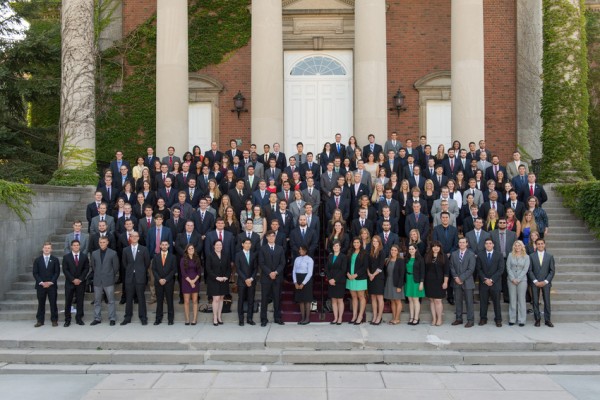Dineen Hall Welcomes First Classes
The College of Law welcomed its 118th first-year J.D. class on Aug. 18 as 170 students arrived for a week-long orientation program, including the traditional community service project to help local food pantries.
The college also welcomed its third incoming class of foreign-educated lawyers and legal scholars to its Master of Laws (LL.M.) in American Law program. The LL.M. program will enroll 20 students in the fall semester and two students in the spring semester, representing the legal education systems of Saudi Arabia, South Korea, Ethiopia, Kenya, Canada, China, Argentina, Nigeria, Sudan, Syria, Turkey, the United Kingdom, Togo, the Kurdistan Region of Iraq and Uzbekistan.
“We are excited to welcome this year’s J.D. and LL.M. students to our new home, Dineen Hall. They represent one of our strongest credentialed and most accomplished classes in recent history and they will benefit from what is available to them in our state-of-the-art facility,” says Nikki Laubenstein, director of admissions for the College of Law.
Following a formal opening convocation ceremony at Hendricks Chapel, orientation session topics included faculty panel discussions, sessions on professional development and building professional networks, wellness programming, managing finances and small group meetings with distinguished alumni who return to campus to discuss legal career paths. A question and answer session for family members with Senior Assistant Dean for Student Life Tomás Gonzalez was again part of this year’s program.
Law students conclude orientation with a community service project at the Matthew 25 Farm in Tully, and assist in the harvest and preparation for food distribution to local food banks.
Entering J.D. students come from 28 states and the LL.M. class represents students from 14 countries. The average student age is 24 and the range in age spans 30 years. Females represent 38 percent of the first-year J.D. class, while students of color account for 19 percent. Close to 50 percent of the students are non-New York State residents representing 114 undergraduate colleges and universities; 10 percent have advanced degrees.

